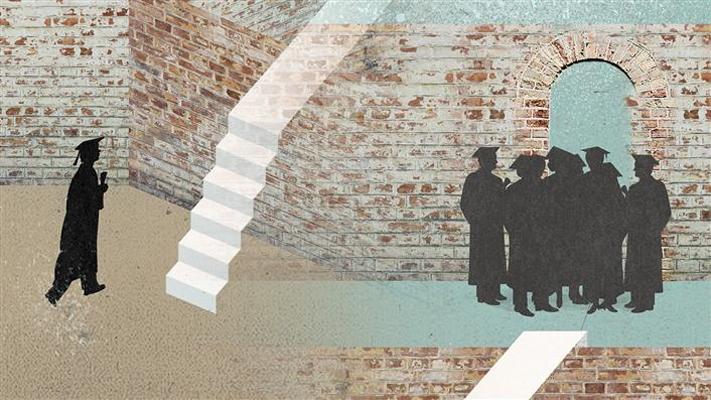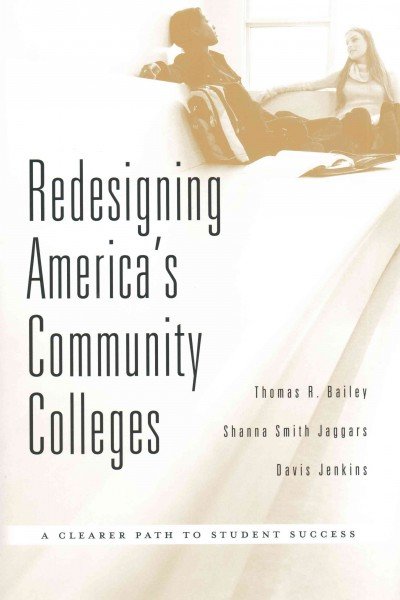
I was intrigued to discover that the hot new trend in American higher education policy is to limit that choice. Why would American institutions of higher education willingly abdicate what seemed to me to be their greatest strength?
When I first encountered the concept of Guided Pathways in the community college context, it seemed familiar. As it was explained to me, Guided Pathways is a reform that aims to place students on a “pathway” of predetermined courses, instead of letting students choose their own classes in a manner often described as somewhat haphazard. This pathway aims to increase students’ likelihood of graduation and to support their transfer to the university and major of their choice. This idea was familiar to me, as this is precisely the kind of educational system that has prevailed in Peru. Considering that freedom of course selection is precisely the feature of the U.S. educational system that I, as a Peruvian, find the most alluring, I was intrigued to discover that the hot new trend in American higher education policy is to limit that choice. Why would American institutions of higher education willingly abdicate what seemed to me to be their greatest strength?

The touchstone text of the Guided Pathways movement, Redesigning America’s Community Colleges: A Clearer Path to Student Success, was written by Thomas Bailey, Shanna Jaggars, and Davis Jenkins. In broad strokes, it presents a very ambitious package of reforms to boost graduation rates. They argue that the wide array of courses and majors offered by “cafeteria-style colleges” can overwhelm students—especially first-generation college students and minorities. With a dazzlingly wide selection of courses, the argument goes, and sometimes arcane graduation and transfer requirements—even to advisers and faculty!—students become frustrated and drop out. In order to address this situation, they propose the “Guided Pathways” model, in which students would be required to pick a “pathway” shortly after enrollment (or even upon enrollment) that would determine which classes they would take, and the order they would take them in. The restructuring around pathways is the single most important reform, but it is accompanied by several others, such as emphasizing completion rather than simply access, focusing on programs instead of individual courses, and tracking students’ academic performance so that advisers might intervene early and effectively. Guided Pathways also affects hiring practices—placing greater emphasis on candidates’ attentiveness to student retention—and faculty development activities.
To be fair, Bailey et al. make a compelling, evidence-based case. There is certainly much of value in the book, and a community college that implements their suggestions may very well see positive results. Nevertheless, in my time at Seattle Colleges, I have noticed significant skepticism. While there are faculty who support Guided Pathways due to its many potentials, other faculty members denounce Guided Pathways as tantamount to old-fashioned tracking with a shiny new name. They argue that it undermines the liberating role of the community college as a space for students to find themselves and subsequently effect change in their communities, replacing it instead with what would basically be vocational training within the bounds of the world as it currently exists. And I have heard concerns that Guided Pathways-inspired reform will end up limiting itself to mapping the “pathways” themselves and enforcing them, while the rest of the ambitious package of reforms never catch up. The result of a half-hearted implementation of a Guided Pathways model could be the loss of the exploratory experience of ample course selection for students—without the expected increase in graduation rates. As importantly, not only would student choices shrink (for good or for ill), but so too would those of faculty.
The Peruvian university system, which features a “pathways” system so rigid that students are not so much “guided” through them as they are “railroaded,” might shed some light on what that could look like. In one Peruvian university where I taught, there were around twenty faculty in History (mostly adjuncts), each with teaching loads ranging from two to ten classes per semester. However, in a school with 60,000+ students, there were basically only two History classes offered: a Peruvian history survey and a world history survey. And there was no choice involved in taking this small selection of courses: one or both courses simply were or were not on your pathway. Such a system conspires against the existence of specialized or “signature” courses. Unless it can be convincingly argued that a given class should be taken by every student in a given pathway, it simply cannot exist.
Is there a way to square this circle? To have the cake and eat it too? My first thought on this was that the community college pathways team could provide students with a kind of “menu of the buffet,” i.e., a pathway through many existing options that, if followed, would lead to an Associate’s Degree and/or transfer to a four-year college. This would preserve a wide array of classes for students who feel confident navigating the intricacies of graduation requirements, as well as the possibility for community college professors to teach topics nearest to their hearts. Admittedly, Bailey, Jaggars, and Jenkins would probably be skeptical of this kind of solution. It would be a half-hearted—maybe even a quarter-hearted—implementation of their much vaster reform agenda.
Yet faculty morale ranks high among the factors that will determine whether any reform succeeds or not. As a Mellon fellow, I’ve had the opportunity to witness how community college professors wield their extensive knowledge through effective teaching. The probable loss or reduction of signature and specialized courses would be unfortunate for students—but also for these talented faculty, who find a great deal of fulfillment in teaching specialized classes. It seems to me that finding a way to allow faculty to teach courses that energize and excite them while still increasing chances of student retention is a challenge Guided Pathways has yet to fully address. Faculty on both sides of the debate agree on one thing: that Guided Pathways is happening, whether one approaches it perfunctorily or with alacrity. So I hope this question of faculty morale remains very much alive as Guided Pathways reforms move forward.
Jorge Bayona (he/him/his)
Jorge Bayona was a 2019 Mellon Collaborative Fellow for Reaching New Publics with Adrian Kane-Galbraith. He is a transnational historian of Southeast Asia, with a focus on the Philippines and the larger Pacific World.
